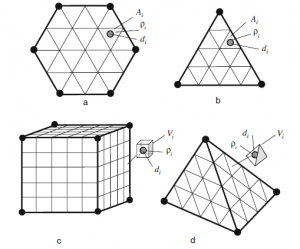Tam H. Nguyen et al. developed this novel method called Multiresolution Topology Optimization (MTOP) (link), which utilizes different meshes, namely the displacement mesh , the design variable mesh and the density mesh. Using a coarse displacement mesh which is used for finite element analysis, computational time is reduced, by using fine design variable mesh and the density mesh, a high resolution result is obtained. In the article a cantilever with 240×80 mesh size optimized with conventional techniques is compared to 48×16 mesh MTOP sample and the results are practically identical. Many other examples are given, reduction in element number most notable in 3D examples, like 5000 vs 320 000 elements with similar results. It is obvious that the reduction in computational time would be enormous. However no specific data is given about the time reductions obtained.
Tags
2D 3-D print 3D Additive Layer Manufacturing aerospace Aesthetics Airbus aircraft ALM alternative AMG architecture article Audi automotive bayer bearing beginner bell crank billet biomimic. dendrite BLOODHOUND BMW Body in white bolt Bracket brake Brembo bridge caliper Car casting CFRP frame free hybrid interpretation machining magnesium mesh Optimization race software Topology wing-
Recent Posts


Link for above mentioned information,
http://paulino.cee.illinois.edu/Group%20Papers/2010/10nguyen_computationalparadigm.pdf
Thank you Nihar, I somehow forgot to post the link